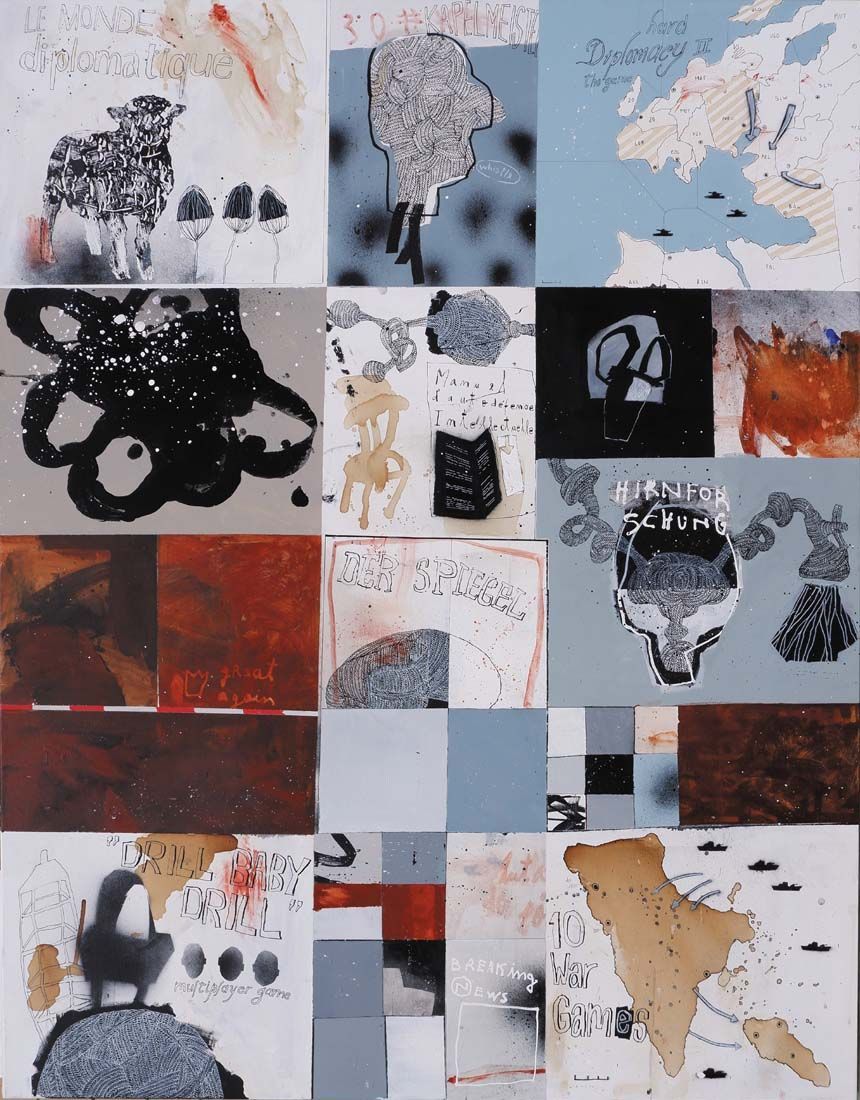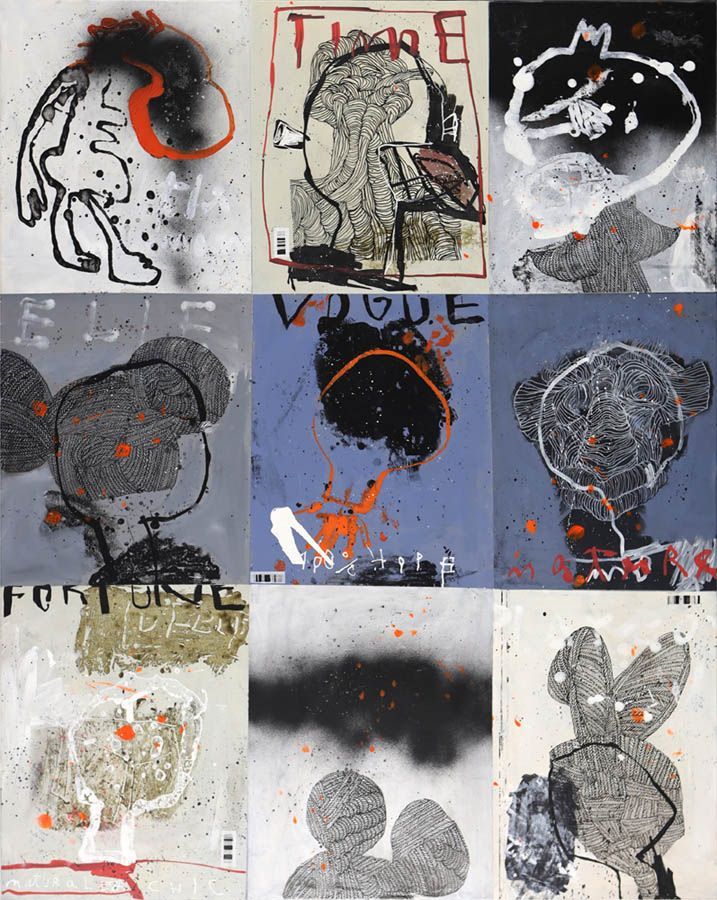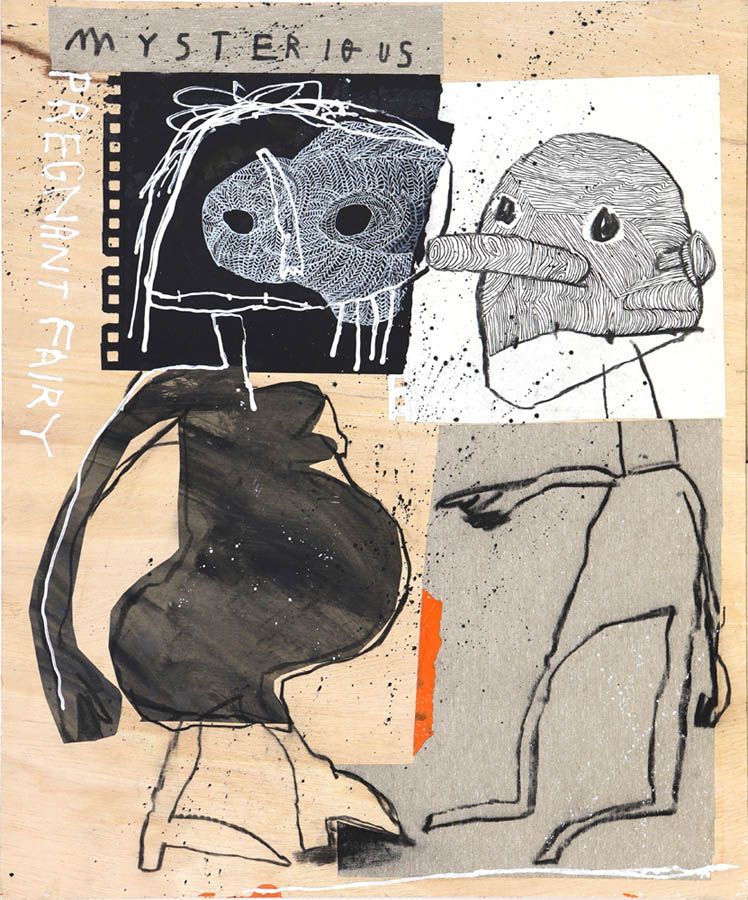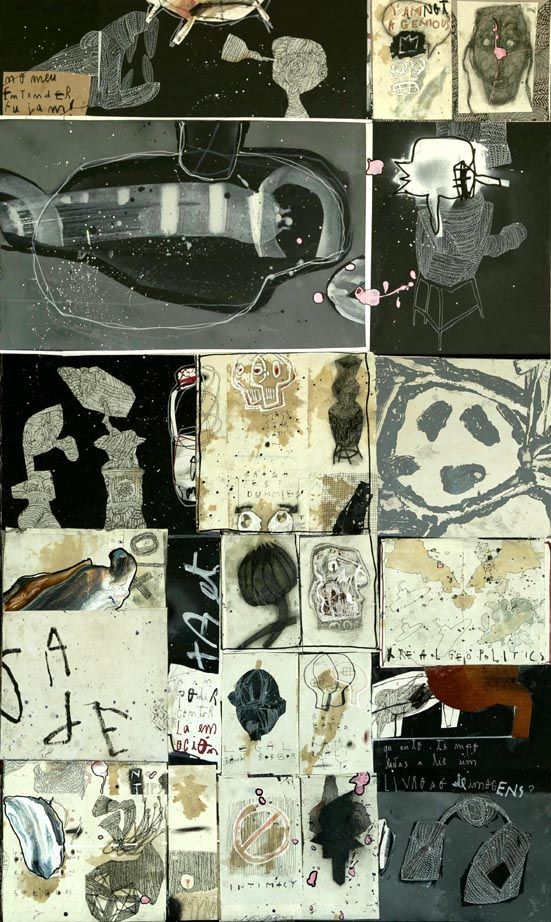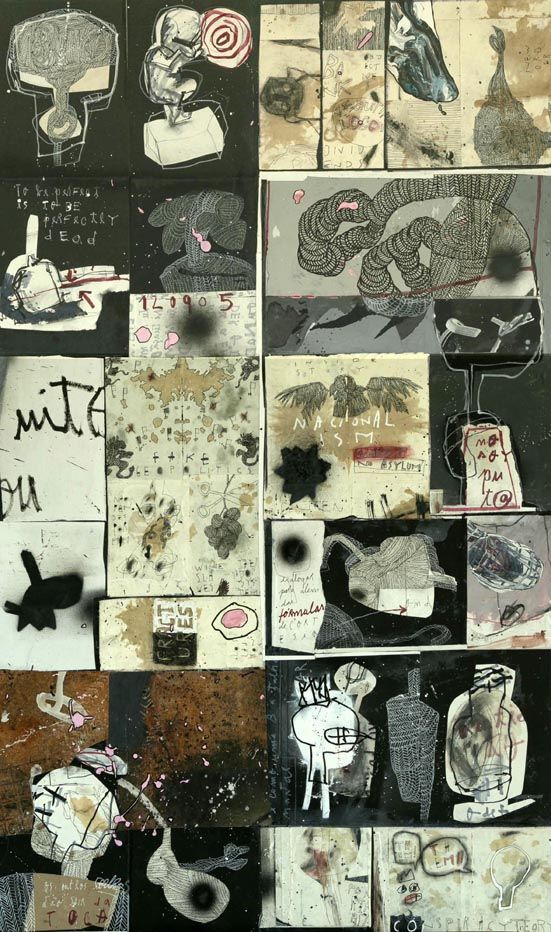Carlos Barão, Lisboa, Portugal, 1964
Estudou história da arte, design de comunicação e psicologia na Universidade Nova de Lisboa e no Instituto Superior de Psicologia Aplicada.
Pintura
O que me interessa no ato de pintar é, essencialmente, criar as condições para aceder a uma forte sensação de descoberta e deslumbramento.
Como uma criança que vê e apreende algo pela primeira vez, como um astronauta que visita um novo mundo, a pintura pode ser terreno fértil para a descoberta, do mundo e de nós próprios. Promover a surpresa através do acaso, despistar, desconcertar a racionalidade de todos os dias e dar uma chance a que o Ser seja reconhecível, tanto por quem faz a obra, como por quem dela usufrui.
Na busca da compreensão, interpretamos constantemente o mundo para tentar ver sentido nele. Estabelecemos relações entre pessoas, objectos, ideias, afetos e, nesta busca incessante do parentesco das coisas, somos invadidos não raramente por uma estranha e fascinante sensação de familiaridade. As partes conectam-se ao todo e este acolhe-as como um mar que resgata as suas gotas.
A busca do todo através da combinação das suas partes, numa tentativa de repetir a emoção e o encanto quase infantil de ver algo pela primeira vez refletido numa tela.
He studied art history, communication design and psychology at the
Universidade Nova de Lisboa and the Instituto Superior de Psicologia Aplicada.
Painting
What interests me in the act of painting is, essentially, to create the conditions to access a strong sense of discovery and wonder.
As a child who sees and apprehends something for the first time, as an astronaut who visits a new world, painting can be fertile ground for discovery, both of the world and us. Promoting surprise through chance, misleading, disconcerting the everyday rationality and giving the Being a
chance, misleading, disconcerting the everyday rationality and giving the Being a chance to be recognizable, both by whom does the work and by those who benefit from it.
In the pursuit of understanding, we constantly interpret the world to try to find meaning in it. We establish connections between people, objects, ideas, affections, and in this incessant search for the “kinship” of things, we may be evaded by a strange and fascinating sense of familiarity. The parts connect to the Whole and it welcomes them as a sea that rescues its drops.
The quest for the Whole by combining its parts in an attempt to repeat the emotion and the childlike charm of seeing something for the first time reflected on a canvas.


